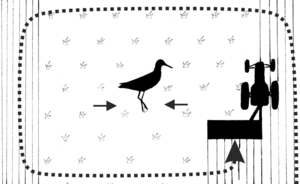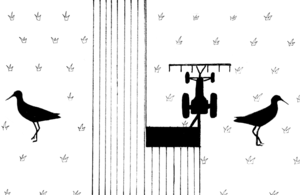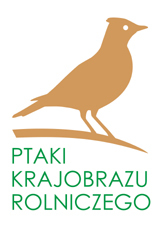GOOD PRACTICES FOR PROCTECTING BIODIVERSITY OF AGRICULTURAL AREAS
To protect the biodiversity of agricultural areas you need to properly cultivate arable land, e.g.:
Mow inside out. This mowing technique allows to reduce the risk of unintentionally killing the nestlings or small mammals during the reaping. Animals can then escape towards unmown green areas and move to the outer area of the land to safety. Mowing outside in drives the animals into the centre of the land into a trap, cutting off their escape route.
-

Mowing outside in - NO!
-

Mowing inside out - YES!
Reduce fertilizing. Cultivating the arable land as per fertilizing schedule, based on the nitrogen balance and the current chemical analysis of the soil, defining the contents of phosphorus, potassium, magnesium and necessary liming. It allows you to avoid excessive chemicalization of agriculture by applying fertilizers in volumes adapted to the real needs of plants.
Delay first mowing. If you mow the meadow after June 20, it significantly increases chances for rarer and rarer meadow-nesting bird species, such as lapwing, black-tailed godwit, common redshank, Eurasian curlew to fledge their clutch. This will also let various species of plants (including rare ones!) to blossom, providing food for many insects, including pollinators, who are extremely valuable for nature and farming alike.
Crop rotation, sequential change of crops from different families in farmland. If you rotate crops it helps prevent diseases and pests from spreading across crops and fertilizes the soil. It also has good impact on biodiversity as it creates a mosaic of crops.
A "flushing out device" mounted in front of the tractor that consists of clinging chains, helps scare animals away from turfs during mowing and makes them escape into safety.
Plant and top willows We all know the typical shape of the pollard willow is the result of regular tree cultivation that includes regular tending of the tree by cutting off the sprouts (topping) of the tree in autumn and winter time. It used to be done for the benefit of men who used willow sprouts to produce wicker, animal feed or as fuel. Today old specimens are overgrown and break under the weight of their branches. The only way to save pollard willows is to regularly top them. It also makes sense to plant new willows - these trees easily root, and you can use shoots of nearby trees as cuttings. Here you can learn how to make a pollard willow.




